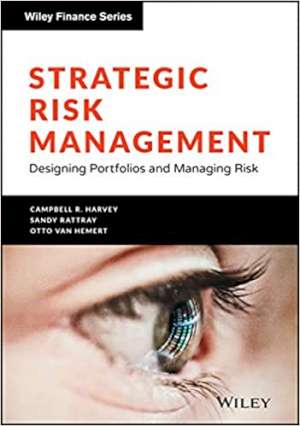28 March 2022
Strategic Risk Management
Designing Portfolios and Managing Risk
Campbell R Harvey, Sandy Rattray and Otto van Hemert
2021, John Wiley, 256 pages,
ISBN 9781119773917
Reviewer: Dame Kate Barker, NED, Man Group plc

This book is a series of essays on techniques in risk management – written by authors working with, or for, Man Group plc (conflict alert – I am an NED of Man Group). The driving thought is that better risk management, based on quantitative methods, will improve portfolio performance. In particular it is argued that this will help to manage through difficult market periods. Several chapters are revised versions of articles in The Journal of Portfolio Management, and the conclusions are based on longer runs of data than the one to two decades typical of much work on this topic. It is of interest to those involved in asset management.
The first two chapters consider techniques for generating crisis alpha. The first looks at how trend-following techniques compare with use of a long straddle option. Analysis of the past is taken back to 1960, to ensure it is not all drawn from the period of declining interest rates. The simple approach in the first chapter is followed up in the second – where trend-following is compared with holding put options (a strategy which is ultimately successful, but costly) as a protection against a large equity correction. Looking at eight equity drawdowns (over 15% falls in S&P) and three recessions in the US since 1985, a rolling long put strategy is found to have negative cost-adjusted returns. Other strategies are also considered – including ones based on quality and value equity factors. The conclusion is that the trend-following strategy momentum strategy and a long-short equity based on assessing single stocks can both be protective in downturns – noting that different downturns may benefit from different strategies.
The third chapter considers a different form of risk management – which is to focus on a fixed level of volatility. It finds that volatility scaling/targeting improves Sharpe ratios for risk assets, but has little effect for fixed income, currency and commodities. In addition, the improvement could be strengthened by a trend-following overlay. It is argued that volatility is more persistent between periods than return is.
Many investors would also look to use rebalancing to keep asset allocation within agreed bounds – the consideration of this topic reaches the reasonably familiar conclusion that mechanical rebalancing can actually worsen performance in drawdowns. It is suggested that either a trend-following allocation or a strategic trend-following rebalancing rule can reduce this risk – as can a wider asset allocation.
Turning to approaches for assessing managers – the utility of the maximum drawdown (largest peak-to-trough) statistic is considered. Larger drawdowns can indicate a loss of manager skill, and if asset owners are known to use drawdown rules to assess managers – this can affect manager behaviour which itself reduces drawdown size. A range of different rules and considerations related to when to fire managers are set out.
The final chapter using past data assesses quantitative versus discretionary techniques (‘man versus machine’- perhaps ‘human versus machine’ would have been a better heading). Adjusting for risk factors, the broad conclusion is that systematic and discretionary funds have produced similar returns historically, on average. However, for both styles there is considerable dispersion across managers. The importance of thoroughly understanding the specific risks inherent in any particular fund is again stressed.
The book finishes by looking at an out-of-sample test of the earlier conclusions, using the Covid-19 equity sell-off in 2020. Not surprisingly, a well-timed put option would have been a very successful strategy – but (see above) over time these options are expensive. The trend-following and long-short quality-focused equity strategies would both have been successful. Volatility targeting and strategic, rather than mechanical rebalancing also worked well. The crisis supported the argument of all these essays that investment and risk management need to be better coordinated.
This book as not an easy read, but it is rich in data and careful analysis. The contention that integrated risk management will yield better returns in the long-run is well-argued. While a cynic might feel that the conclusions are biased in favour of the hedge fund industry, a more positive view is that it is a generous sharing of the fruits of research. The example of the Covid-19 equity shock might also be thought to be atypical - though that is true of every shock. As the foreword comments: ‘the challenge is garnering sufficient incremental return from new investments to justify all incremental risks’. Easy to say, hard to do – but the essays in this book would support many asset owners in asking themselves better questions.
